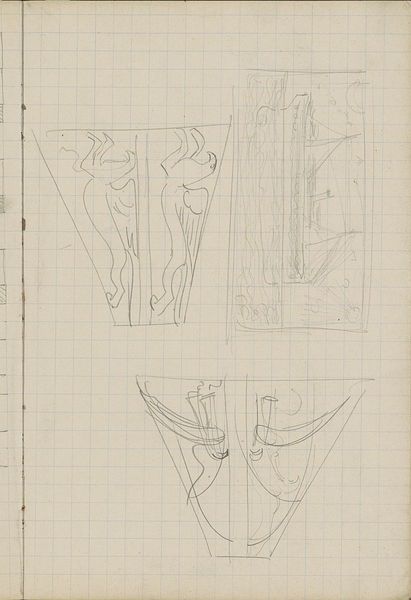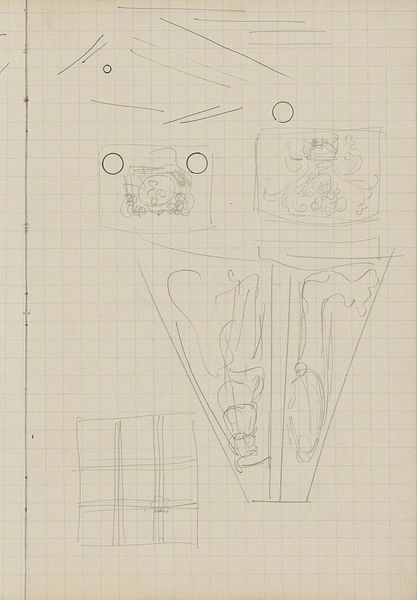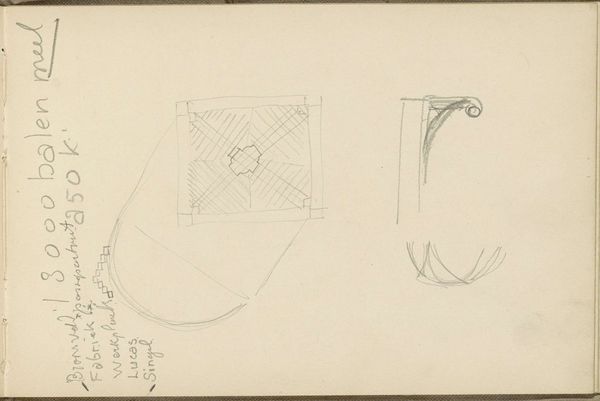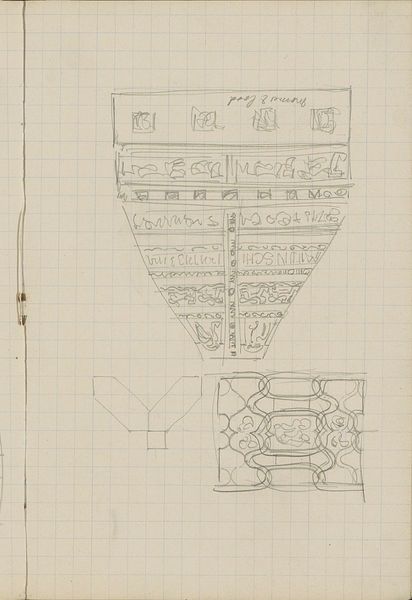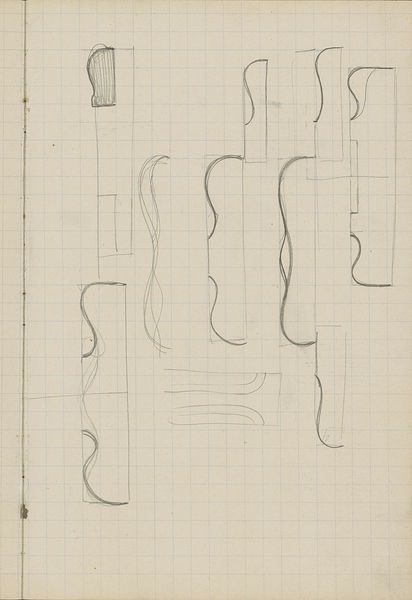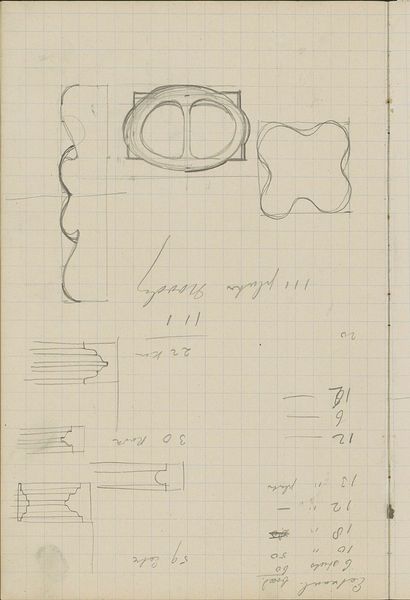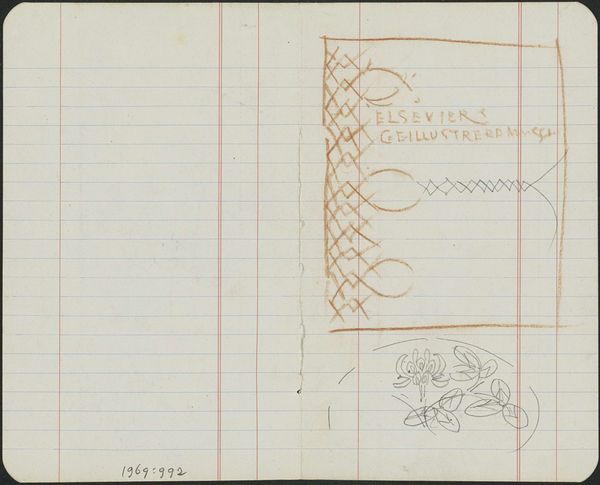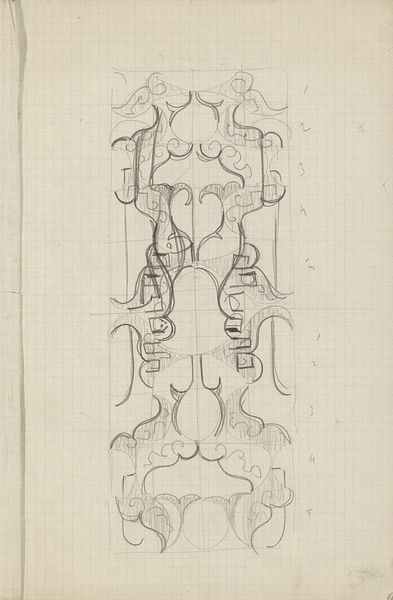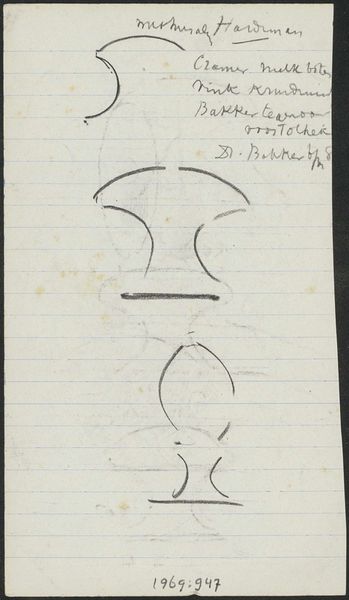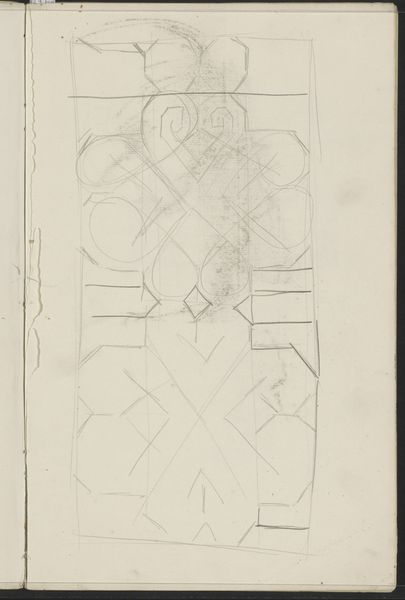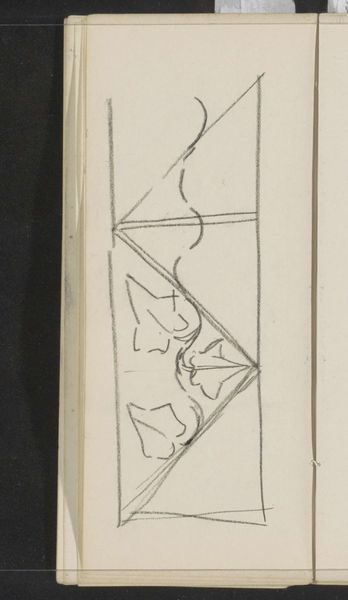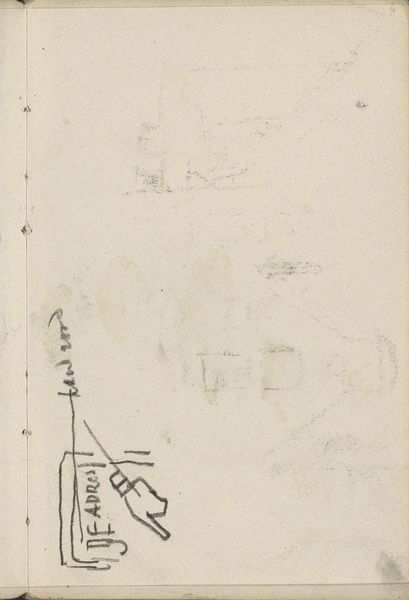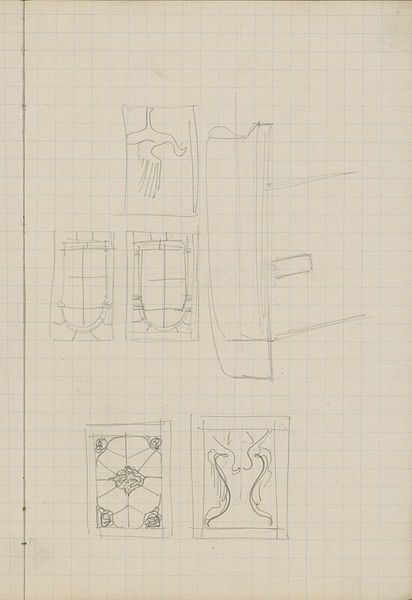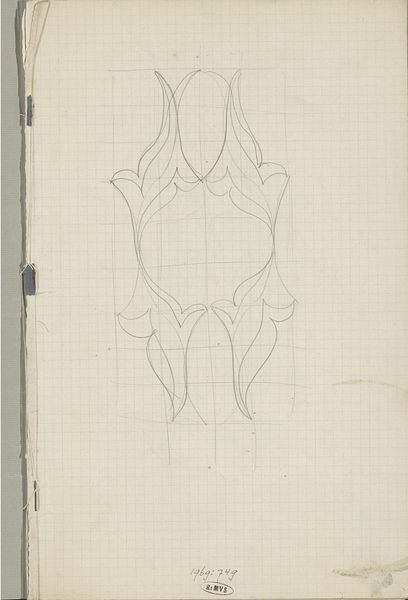
Copyright: Rijks Museum: Open Domain
Editor: Here we have Carel Adolph Lion Cachet's "Triangular Ornaments with a Floral Motif," a pencil drawing from around 1925. The geometric shapes combined with the organic lines give the sketch a compelling tension. What visual vocabulary strikes you in this piece? Curator: I see the echo of ancient vessels. The triangles, while modern in their geometry, mimic the silhouette of chalices or lamps. Consider how, throughout history, we find floral motifs intertwined with sacred objects and spaces, from temples to humble household shrines. The way the drawing emphasizes symmetry speaks of order and balance, deeply ingrained human ideals reflected across diverse cultures. What could these stylized floral forms signify? Editor: Perhaps a yearning for nature in an increasingly industrial world, or a symbol of growth and renewal following the First World War? Curator: Precisely. Post-war Art Nouveau often wrestled with reconciling beauty and function. The floral motif here acts as a potent symbol of hope and rebirth, recurring themes across cultural expressions during times of rebuilding. Note the deliberate simplification – a movement away from intricate detail toward symbolic representation. Where might we find this symbolism replicated today? Editor: In branding or logo design, perhaps, where a simple image carries complex associations. Or in tattoos. Curator: Excellent point! Tattoos also draw upon enduring symbols. Cachet's design reminds us how visual motifs transcend time, continually reshaped to reflect evolving societal values and individual experiences. Editor: So, this isn't just a pretty drawing, it's a conversation across time. Thanks for highlighting the dialogue. Curator: And thank you for sparking that connection.
Comments
No comments
Be the first to comment and join the conversation on the ultimate creative platform.
